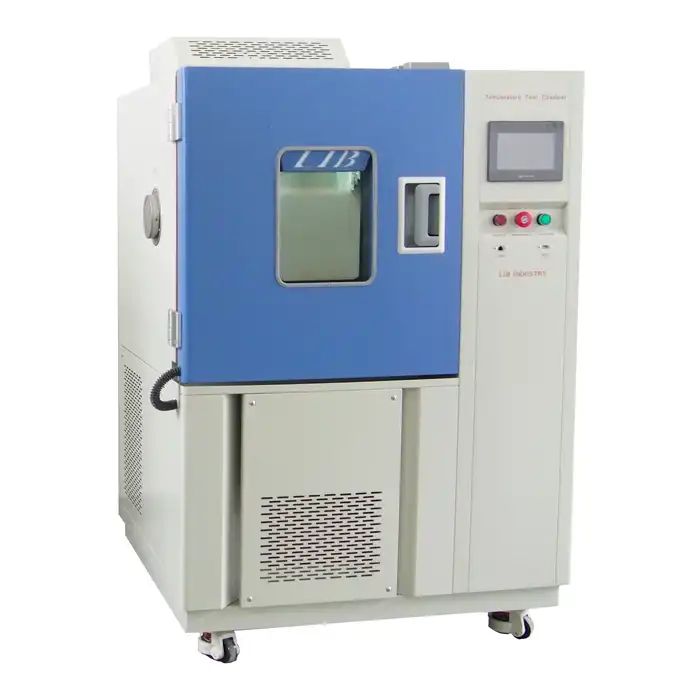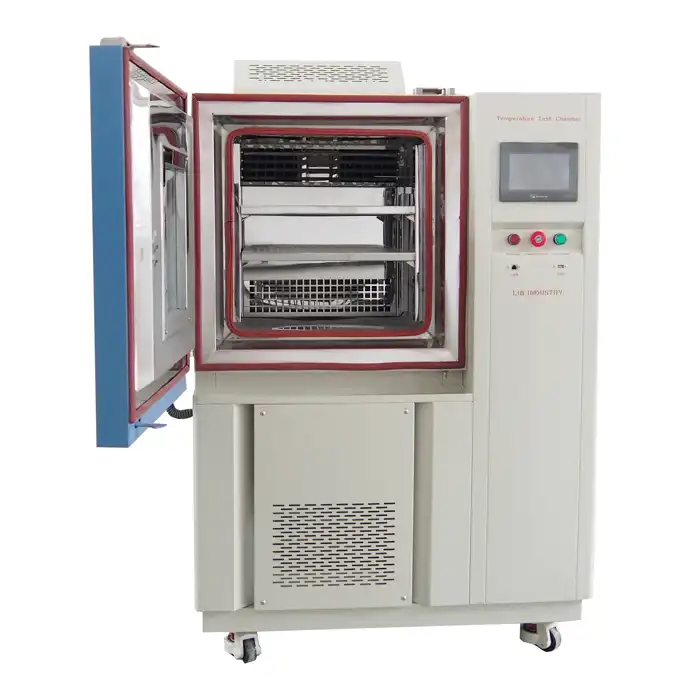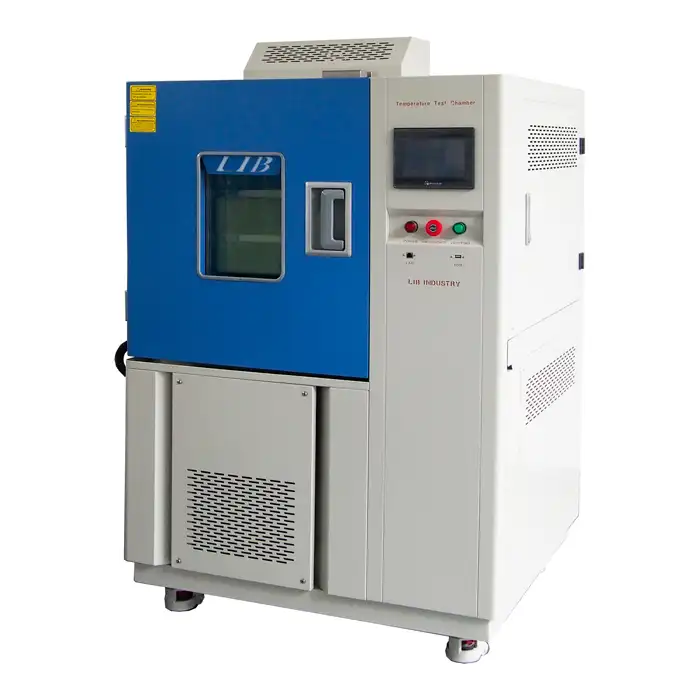What is an ASTM G85 Salt and SO2 Spray Test Chamber?
An ASTM G85 salt and SO2 spray test chamber is a specialized environmental testing apparatus designed to evaluate the corrosion resistance of materials and coatings under harsh, acidic conditions. This sophisticated equipment simulates aggressive atmospheric environments by combining salt spray with sulfur dioxide gas, replicating real-world scenarios where materials may be exposed to coastal or industrial pollutants. The chamber adheres to the ASTM G85 standard, which outlines specific procedures for conducting cyclic acidified salt fog testing. Manufacturers and researchers utilize these chambers to assess the durability and performance of various products, including automotive components, aerospace materials, and protective coatings, ensuring they can withstand corrosive environments over extended periods.
Understanding the ASTM G85 Standard and Its Significance in Corrosion Testing
Origins and Development of ASTM G85
The ASTM G85 standard was developed by the American Society for Testing and Materials (ASTM) to address the need for more comprehensive corrosion testing methods. This standard emerged as a response to the limitations of traditional salt spray tests, which failed to adequately simulate complex environmental conditions encountered in real-world scenarios. The ASTM G85 incorporates multiple test variations, each designed to replicate specific corrosive environments more accurately.
Key Components of the ASTM G85 Salt and SO2 Spray Test
The ASTM G85 salt and SO2 spray test chamber incorporates several crucial components to create a controlled, corrosive environment. At its core, the chamber features a spray system capable of delivering a fine mist of salt solution, typically sodium chloride. This system is complemented by a sulfur dioxide gas injection mechanism, which introduces SO2 into the chamber at specific intervals or concentrations, depending on the test parameters.
Temperature control systems are integral to maintaining precise environmental conditions within the chamber. These systems often include heating elements and sensors to regulate the internal temperature, ensuring consistency throughout the testing period. Humidity control mechanisms are equally important, as they help maintain the desired level of moisture within the chamber, which is critical for the corrosion process.
Additionally, ASTM G85 salt and SO2 spray test chamber is equipped with specimen holders or racks designed to support test samples in a manner that allows for uniform exposure to the corrosive atmosphere. Advanced models may also feature automated cycling systems that alternate between different environmental conditions, such as dry and wet periods, to simulate more complex weathering scenarios.
Benefits of Utilizing ASTM G85 Test Chambers in Product Development
Incorporating ASTM G85 salt and SO2 spray test chambers into product development processes offers numerous advantages for manufacturers across various industries. These chambers provide a controlled environment for accelerated corrosion testing, allowing companies to evaluate the long-term performance of materials and coatings in a fraction of the time it would take under natural conditions. This accelerated testing capability is invaluable for reducing product development cycles and bringing innovations to market more quickly.
Furthermore, the use of ASTM G85 test chambers enhances quality assurance processes by enabling manufacturers to identify potential weaknesses or failures in materials before products reach the end-users. This proactive approach to testing can significantly reduce warranty claims and improve customer satisfaction. The standardized nature of ASTM G85 tests also facilitates better comparison of results across different materials or treatments, aiding in the selection of optimal solutions for specific applications.
Exploring the Technical Aspects of ASTM G85 Salt and SO2 Spray Test Chambers
Chamber Design and Construction Materials
The design of ASTM G85 salt and SO2 spray test chambers is a critical factor in ensuring accurate and reliable corrosion testing results. These chambers are typically constructed using materials that can withstand the harsh, corrosive environment they create. High-grade plastics, such as polypropylene or polyethylene, are often used for the chamber's main body due to their excellent resistance to chemical attack and ability to maintain structural integrity under prolonged exposure to salt and acidic conditions.
The interior of the chamber is designed to promote uniform distribution of the salt spray and SO2 gas. This often involves carefully engineered spray nozzles and baffles that ensure even coverage of test specimens. The chamber's floor is usually sloped to facilitate the drainage of condensed solution, preventing pooling that could skew test results. Viewing windows, typically made of transparent, corrosion-resistant materials, allow for observation of the testing process without disturbing the internal environment.
Control Systems and Automation in Modern Test Chambers
Modern ASTM G85 salt and SO2 spray test chambers are equipped with sophisticated control systems that ensure precise regulation of test parameters. These systems typically feature programmable logic controllers (PLCs) or microprocessor-based control units that manage all aspects of the testing environment. Advanced touchscreen interfaces allow operators to easily set and monitor test conditions, including temperature, humidity, salt spray concentration, and SO2 gas injection rates.
Data logging and monitoring capabilities are integral components of modern control systems. These features allow for real-time tracking of test conditions and automatic recording of environmental parameters throughout the test duration. Some advanced systems offer remote monitoring and control options, enabling operators to oversee tests and make adjustments from off-site locations. Integration with laboratory information management systems (LIMS) further enhances data management and reporting capabilities, streamlining the analysis and documentation of test results.
Calibration and Maintenance Procedures for Optimal Performance
Maintaining the accuracy and reliability of ASTM G85 salt and SO2 spray test chambers requires regular calibration and maintenance procedures. Calibration typically involves verifying and adjusting the chamber's temperature sensors, humidity meters, and salt solution concentration measurement devices. The SO2 gas injection system also requires periodic calibration to ensure that the correct concentration of gas is being introduced into the chamber.
Maintenance procedures focus on preserving the integrity of the chamber and its components. This includes regular cleaning of the spray nozzles, solution reservoirs, and drainage systems to prevent clogging and ensure consistent spray patterns. The chamber's seals and gaskets should be inspected regularly and replaced as needed to maintain a properly sealed testing environment. Corrosion-resistant coatings on metal components within the chamber may need to be reapplied periodically to prevent degradation.
Applications and Industries Benefiting from ASTM G85 Testing
Automotive Sector: Enhancing Corrosion Resistance in Vehicle Components
The automotive industry extensively utilizes ASTM G85 salt and SO2 spray test chambers to evaluate and improve the corrosion resistance of various vehicle components. These tests are particularly crucial for parts exposed to harsh environmental conditions, such as underbody components, exhaust systems, and exterior trim. Manufacturers employ these chambers to assess the effectiveness of protective coatings, including paints, galvanization, and other surface treatments applied to steel and aluminum parts.
Testing in these chambers helps automotive engineers develop more durable materials and coatings that can withstand the corrosive effects of road salt, industrial pollutants, and varying weather conditions. This is especially important for vehicles destined for coastal regions or areas with high levels of industrial emissions. By subjecting components to accelerated corrosion tests, manufacturers can predict the long-term performance of their products and make necessary improvements before mass production begins.
Aerospace Industry: Ensuring Material Integrity in Extreme Conditions
In the aerospace industry, the integrity of materials used in aircraft and spacecraft construction is paramount. ASTM G85 salt and SO2 spray test chambers play a critical role in evaluating the corrosion resistance of aerospace materials and components. These tests are particularly important for parts exposed to diverse environmental conditions, from the high-salt environments of coastal airports to the pollutant-rich atmospheres encountered during flight.
Aerospace manufacturers use these chambers to test a wide range of materials, including aluminum alloys, titanium, and composite materials used in aircraft structures. The tests help in assessing the effectiveness of protective coatings and surface treatments designed to prevent corrosion in critical components such as fuselage panels, wing structures, and landing gear assemblies. By simulating long-term exposure to corrosive environments, engineers can identify potential weaknesses in materials or designs and develop more robust solutions.
Marine and Offshore Industries: Combating Corrosion in Harsh Environments
The marine and offshore industries face some of the most challenging corrosive environments, making ASTM G85 salt and SO2 spray test chambers indispensable tools in their material selection and product development processes. These chambers are used to evaluate the performance of materials and coatings intended for use in ships, offshore platforms, and coastal structures, where constant exposure to saltwater and industrial pollutants creates highly corrosive conditions.
Manufacturers in these industries utilize ASTM G85 tests to assess the durability of structural materials, including various grades of steel and aluminum alloys. The tests are crucial for evaluating protective coatings, such as marine paints and specialized anti-corrosion treatments, ensuring they can withstand the harsh combination of salt spray and acidic pollutants often encountered in marine environments. This testing is particularly important for components like hull plates, deck fittings, and offshore equipment exposed to seawater and atmospheric corrosion.
Conclusion
ASTM G85 salt and SO2 spray test chambers represent a crucial advancement in corrosion testing technology, offering invaluable insights into material performance under harsh environmental conditions. These sophisticated testing apparatuses enable manufacturers across various industries to develop more durable, reliable products capable of withstanding corrosive environments. By simulating real-world conditions in an accelerated timeframe, these chambers contribute significantly to reducing product development cycles, enhancing quality assurance processes, and ultimately improving the longevity and safety of countless products and structures. As industries continue to face challenges related to material degradation and environmental impacts, the role of ASTM G85 testing in driving innovation and ensuring product integrity remains more critical than ever.
Contact Us
For more information about our ASTM G85 Salt and SO2 Spray Test Chambers and how they can benefit your product development and quality assurance processes, please don't hesitate to contact LIB Industry. Our team of experts is ready to assist you in finding the perfect solution for your corrosion testing needs. Reach out to us at info@libtestchamber.com to discover how our advanced testing equipment can help elevate the quality and durability of your products.
References
1. ASTM International. (2019). "ASTM G85-11: Standard Practice for Modified Salt Spray (Fog) Testing." West Conshohocken, PA: ASTM International.
2. Corrosion Testing Laboratories, Inc. (2018). "Handbook of Corrosion Testing and Evaluation." 2nd Edition. New York: John Wiley & Sons.
3. National Association of Corrosion Engineers. (2020). "Corrosion Testing in Automotive Applications." NACE International Technical Report.
4. Aerospace Materials and Manufacturing Research Institute. (2021). "Advanced Corrosion Testing Methods for Aerospace Materials." Journal of Aerospace Engineering, Vol. 34, Issue 2.
5. Marine Technology Society. (2019). "Corrosion Prevention Strategies in Offshore Structures." Marine Technology Society Journal, Vol. 53, No. 4.
6. Society of Automotive Engineers. (2020). "SAE J2334: Laboratory Cyclic Corrosion Test." SAE International, Warrendale, PA.



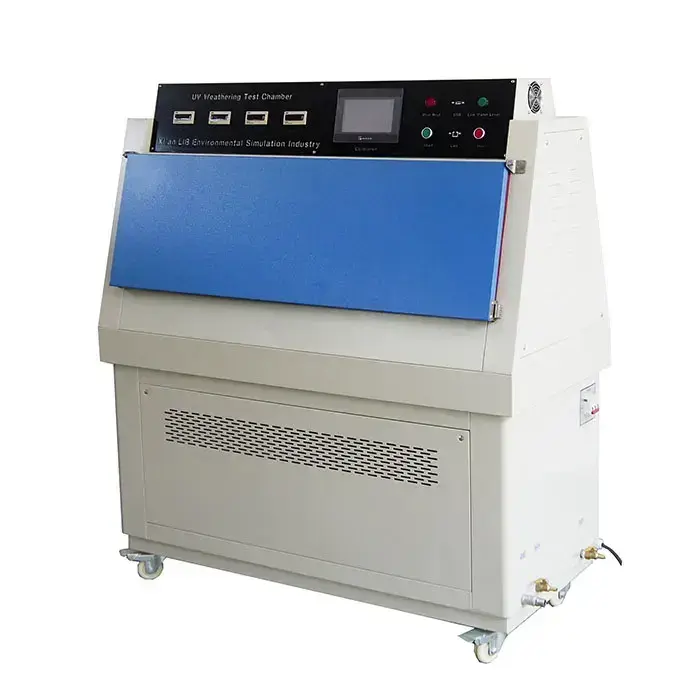
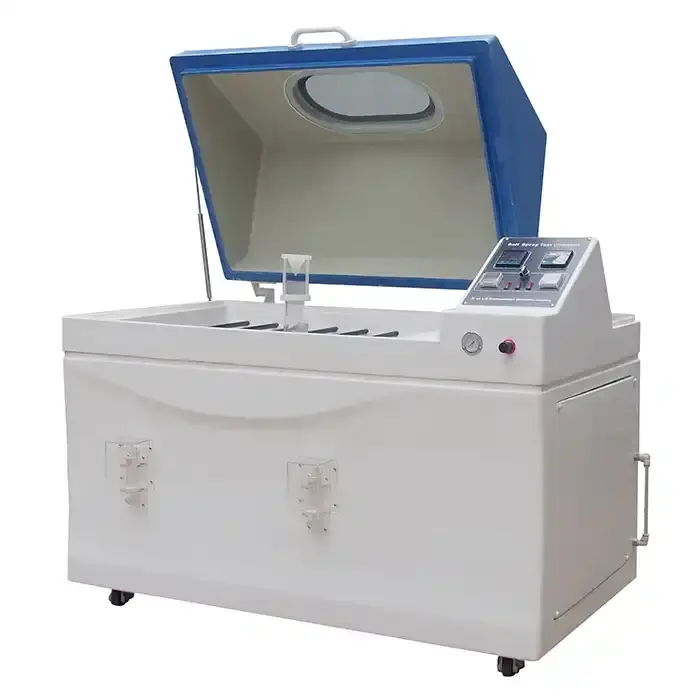
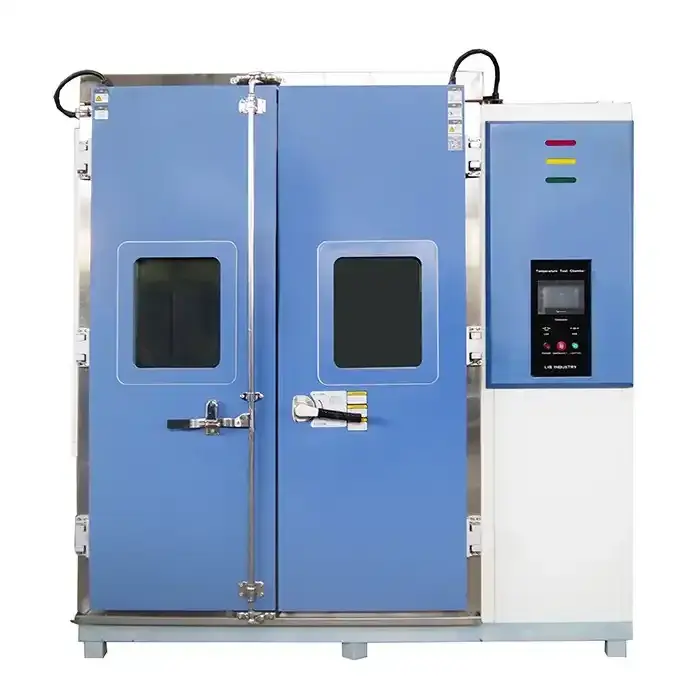
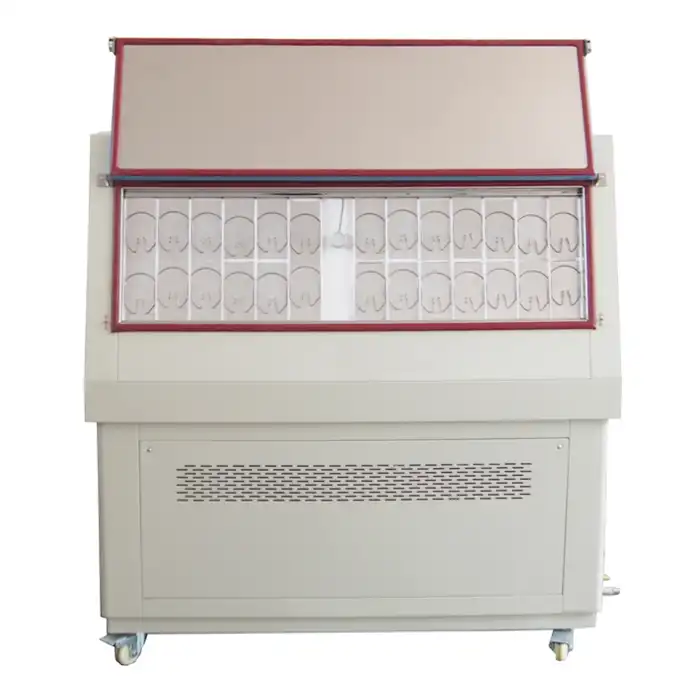
.jpg)
